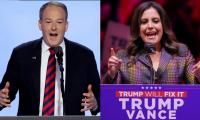December 16 is delineated as a Black Day in the history of Pakistan. On this day in 1971; Pakistan lost its eastern wing (East Pakistan). As if by design, exactly on December 16, in 2014, Tehreek-e-Taliban Pakistan (TTP) militants attacked and gunned down students and staff at the Army Public School (APS), Peshawar.
The APS incident traumatised the entire nation. It was one of the most deadly terrorist attack ever conducted by the TTP resulting the death of 147people including 122 students.
Although Pakistan had faced countless brutal terrorist attacks previously, the attack on APS Peshawar assumed a special significance. This horrific incident and the emotional impact it had also changed the whole course of, and discourse, on the war on terror (WoT), in Pakistan.
Prior to the APS tragedy, many in Pakistan were bitterly divided over the question of the WoT. For instance, political parties such as the PML, the PTI and an entire freemasonry of religious parties, of Sunni persuasion, were of the opinion that there must be a process of negotiations with the TTP.
On the contrary, parties seen to have a liberal bend such as the PPP, the ANP and the MQM advocated a military operation against the TPP on the plea that the Pakistani Taliban did not recognise the state and its institutions.
The media, particularly the electronic media, was also divided over the WoT. Though a section of the media did take a firm stand against militancy, a mainstream trend was to glorify the Taliban. Likewise, the military too was stuck between the good and bad Taliban binary.
It appears paradoxical that a state and society marked by terrorism was not decisively acting against perpetrators of the terror. On the contrary, a considerable section of state and society was apparently a victim of what can be termed as a Stockholm syndrome of sorts. The consensus generated by the APS tragedy is also befuddling in the sense that it engendered a broad national unity almost overnight.
The tragic incident brought all the parliamentary political and religious parties on one table and arguably a national consensus emerged against the TTP and other terrorist organisations. This consensus translated, at least at the state level, into the National Action Plan (NAP). Symbolic of this change at the discursive level was the release of motivational songs by the Inter Services Public Relations (ISPR), whereby the Taliban were identified as the ‘other’.
Every mainstream party represented in parliament lent support to the National Action Plan after the APS tragedy. The tragedy also forced Imran Khan to call off his dharna against the then government over alleged rigging in the 2013 general elections.
The APS incident also forced the Pakistan military to change its stance over the Taliban. While the military had launched various operations against the Taliban, those operations were often accompanied by a carrot-and-stick policy. Post-APS, the military very clearly adopted a new discourse against the Taliban, along with renewed operations to root them out. The media also played its part in promoting solidarity amongst the whole nation. The Taliban were no longer valorised by the electronic media [A section of the press remains an exception though]. The media totally banned coverage of militant outfits, which also had a positive impact on the society.
In short, the biggest impact of the APS tragedy was the promotion of what one may call a ‘national consensus against terrorism’. The entire political spectrum unanimously condemned the APS attack and expressed complete unity on the war against terror.
What explains this shift? First, it was obviously the fact that innocent children were targeted at a school. This moved the entire citizenry in an unprecedented manner. Such was the outrage and fear that schools had to be shut down in panic. This combination of fear and collective loss generated a 180-degree discursive shift. Before the unfortunate APS incident, Pakistani cultural apparatuses were offering competing narratives with regard to the war on terrorism as well as the Taliban. A section of the intelligentsia and the media were claiming that the war on terror was an American war.
As stated before, the opinion against the militants of the TTP was clearly divided on two opposite lines. One section was really confused over whether to go for a dialogue with the TTP or to fight them upfront as the enemies of Pakistan. The APS tragedy generated such rage against the TPP at a mass level that any party sympathetic to them would have been as isolated as the Taliban themselves post the APS tragedy.
Secondly, a discursive change forced the mainstream political leadership towards an apparent change of hearts. No political party in parliament at least was ready to side with the Taliban. Even such fringe and extremist mullahs as represented by Lal Masjid had to stay silent.
Third, the Pakistan military could not ignore the need to reconsider its past policy anymore also because the scene of tragedy was a school run by the Pakistan Army. In a way, the APS tragedy inadvertently played the role of a national unifier, with all the major political forces lending support to military action against the Taliban/TTP and the civil-military leadership also developing a consensus position with regard to terrorism. What is most tragic, though, is that it needed a school massacre for us to review our WoT.
The writer is a policy analyst based in Islamabad.
Email: Sobbi68@gmail.com
Twitter: @SaburSulehria
Proliferation of these platforms denotes an important reality for readers in underserved regions
Government decided to crack down decisively with result protest was over by early morning on Nov 27
This is critical time for Pakistan to reconsider its growth trajectory and align with international trends
Khawarij are notorious for extremist proclamations branding anyone who disagreed with their views as heretics
Most SOEs such as PIA, may have a negative net worth too, based on their earnings potential
Fortunately, after a decade’s struggle with smog, Pakistani Punjab has understood the urgency of climate action







